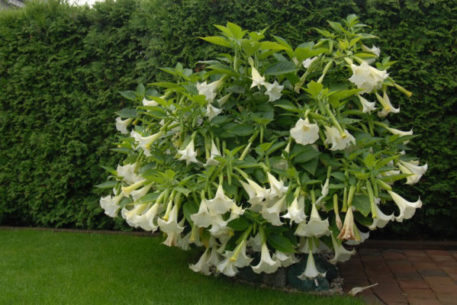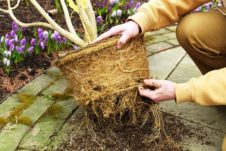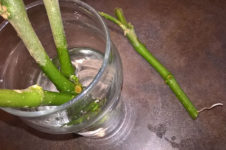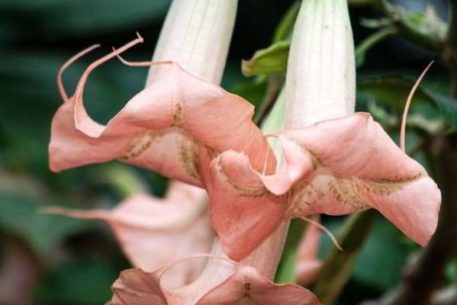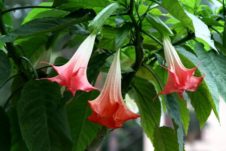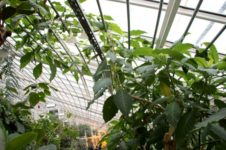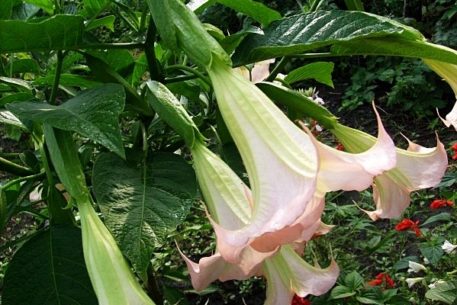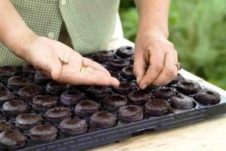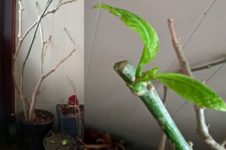Brugmansia with marvelous bell-shaped flowers exuding an excellent aroma, is an exotic shrubby or tree-like plant from the Solanaceae family. The representative of the tropical zones of Central and South America is also known as the "angel trumpets", to which he owes a bizarre shape of inflorescences. In a temperate climate, planting and caring for Brugmansia in the open ground require some time and attention due to the heat-loving nature of the culture.
Material Content:
Plant description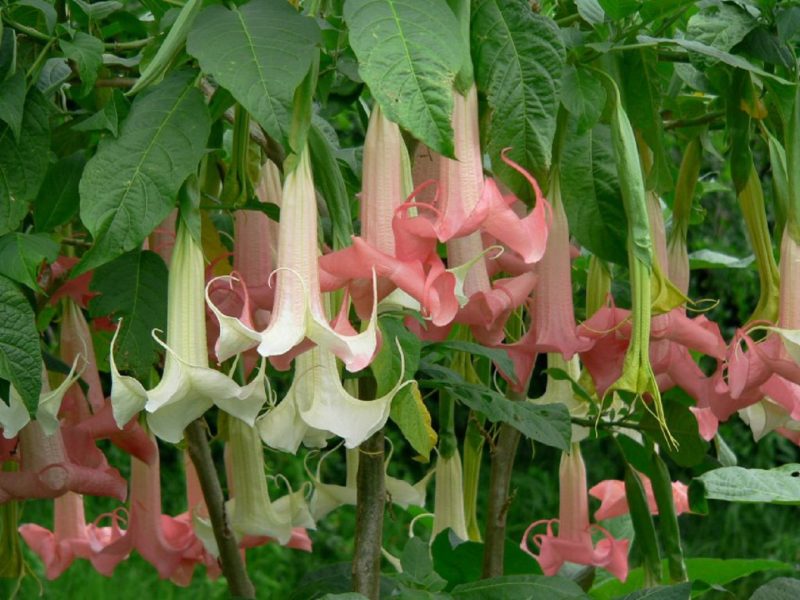
An evergreen tree-like shrub, less often a tree, with large flowers in the form of giant bells of various colors in nature reaches a height of 6 m. The drooping leaf plates differ in impressive size. Due to the non-frost resistance in the Middle lane, the culture is grown in open ground only in the warm season. Then it mixes into the room - a greenhouse, a winter garden or an apartment. The genus in the natural environment combines 11 species. Golden brugmansia with yellow inflorescences and large, slightly lowered leaf blades, as well as tree brugmansia, which became the progenitor of many varieties with terry and longline inflorescences, are especially popular among gardeners.
When to plant Brugmansia in open ground
Brugmansia lands in the garden after preliminary hardening at the end of spring, when the threat of deadly return frosts harmful to the culture is finally gone. Hardening is carried out by daily moving the tub with the plant to fresh air and gradually extending its stay on the street.
Landing technology
Planting is carried out in sunny, sheltered from the wind areas with a nutrient substrate prepared by mixing garden loam with peat and humus in a ratio of 1: 2: 1, as follows:
1. A volumetric landing pit is dug up, at the bottom of which a little sand is poured out to improve the drainage qualities of the soil.
2. The bush falls into the hole with an earthen lump.
3. The plant is buried, the earth is compacted, and the trunk circle is slightly moistened.
Brugmansia: outdoor care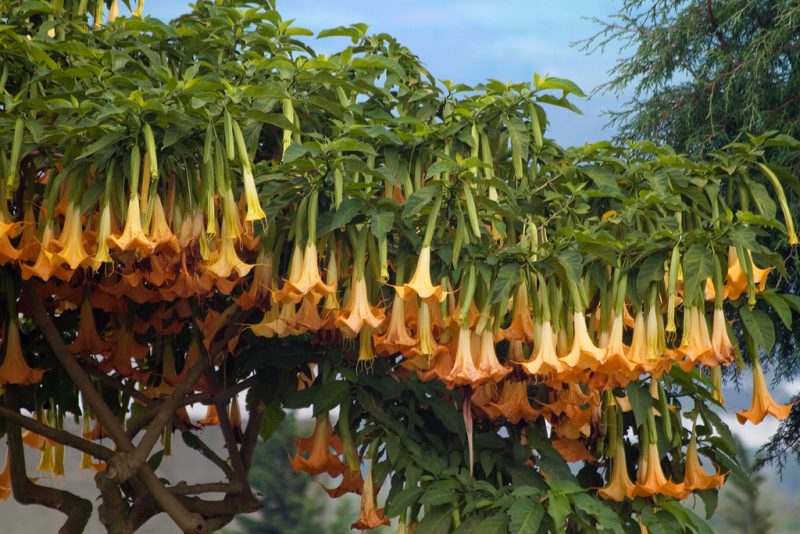
To maintain a high decorative culture, the Brugmansia flower garden needs careful care because of its tropical nature.
Watering
In hot and sunny summers, the inhabitants of tropical forests should be watered daily and periodically irrigated. If cloudy weather persists, it is recommended to moisten Brugmansia with an interval of 3-5 days, as the trunk circle dries.
Top dressing
Due to the fast growth rate, the first top dressing of the shrub with nitrogen-containing fertilizer is carried out in April when the flower is in the tub. In the future, Brugmansia should be fed with complex mineral fertilizers with a high concentration of phosphorus and potassium twice a week. With the advent of autumn, fertilizer application is reduced.
Pruning
In early spring and as vegetation grows, damaged, diseased and dried shoots are removed, spoiling the decorative appearance of the bush and taking away its vitality.
Important! When pruning, care should be taken to prevent the removal of Y-like shoots on which peduncles develop.
Winter care
With a decrease in temperature to 5 ° C, an exotic shrub should be transplanted into a tub and moved to a cool, bright room. Brugmansia does not have a pronounced stage of stagnation and continues to grow even in the winter, if it is provided with a temperature within 15 ° C, long daylight hours, systematic feeding and watering.
Pest and Disease Control
Among the harmful organisms that can be observed in violation of the rules for care are:
• whitefly, aphid and spider mite, which can be eliminated by spraying with an insecticidal preparation according to the manufacturer's instructions;
• gray rot, which is also necessary to deal with when using a pesticide, but with a fungicidal effect.
Flower propagation methods
Brugmansia propagated by vegetative methods and seed method.
Seeds
The seed method does not guarantee the preservation of varietal qualities of Brugmansia. However, if this nuance is not of great importance for the grower, then before making the reception, you should study the subtleties of the procedure:
• The disinfected container is filled with a light and nutritious substrate from a mixture of peat and sand in equal quantities.
• Seeds are sown in the winter by seeding to a depth of 0.5-1 cm.
• The container is covered with glass and transferred to a warm, well-lit place without access to the open sun with a temperature of 25 ° C.
• After emergence, which may take from 2 to 7 weeks, the seedlings are sprayed twice a day, and the glass is removed.
• When seedlings form 1 pair of real leaves, they dive into separate pots filled with soil mix for adult plants.
Cuttings
To propagate Brugmansia in this way, young apical cuttings of 15-25 cm long with a growth point in the upper part are selected. The procedure is carried out in late spring and early summer as follows:
1. An activated carbon tablet is dissolved in a tank with settled water to disinfect the liquid.
2. Cuttings are placed in the water.
3. After 2 weeks when the cuttings are in a bright, warm place, the root system should begin to form at the planting material.
4. When the roots reach a length of 5 cm, the cuttings are planted in fertile soil, where they take root for 2-3 weeks.
Air layering
The technique is applicable in the spring, when an incision is made on a healthy, well-developed shoot of one year old age, treated with a growth stimulator and wrapped in moss. Sphagnum is systematically moisturized and after 2 months completely removed. A layer with aerial roots is separated from the mother plant and planted in a light, nutritious soil mixture. After 3 weeks of growing, a new Brugmansia is ready for planting in a permanent habitat.
If Brugmansia leaves turn yellow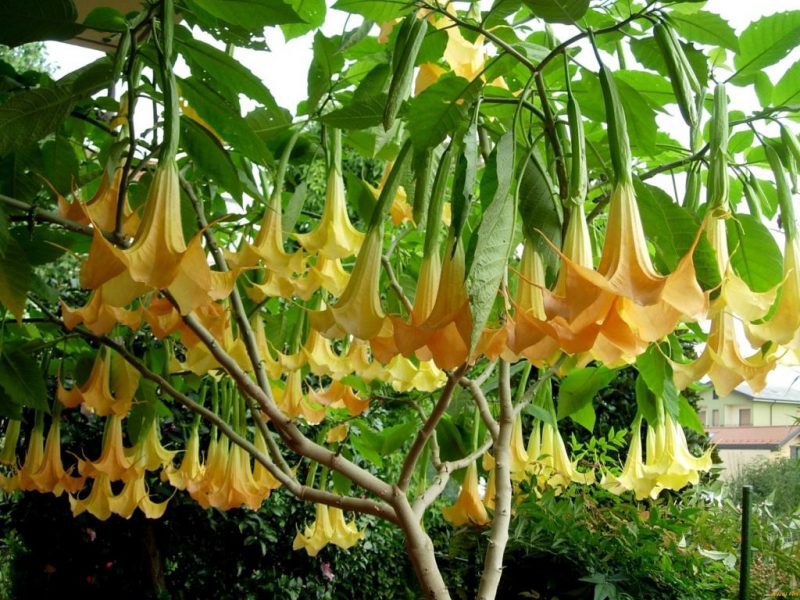
Among the reasons that provoke yellowing and falling of foliage on young shoots, two main ones stand out:
1. Population of the plant by sucking pests, feeding on the juice of leaves, which eventually begin to turn yellow and fall off.
2. Nitrogen deficiency, which can be compensated by increasing the frequency of fertilizing with nitrogen-containing fertilizers.
Plant poison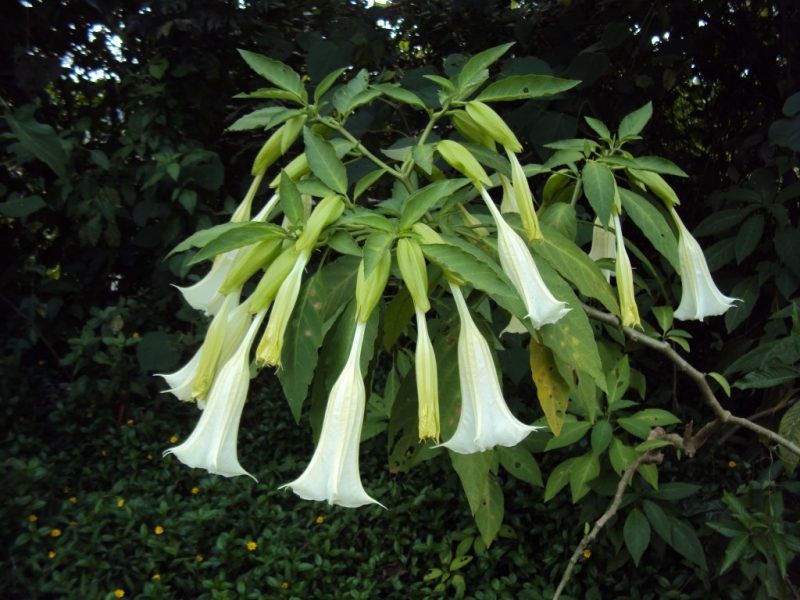
All parts of an exotic plant are poisonous.
Its juice causes irritation on the skin, so it is important to carry out all work with the flower only in protective gloves. When placing Brugmansia on a site or in a room, it is necessary to choose areas in which children and pets do not have access.
Thus, a flowering plant from tropical forests, due to its nature, requires some effort from the grower. However, since the nature of Brugmansia cannot be considered capricious, with a competent approach to cultivation, the owner of the crop will annually enjoy the abundant flowering and wonderful aroma of flowers that they exude in the bud formation phase.


